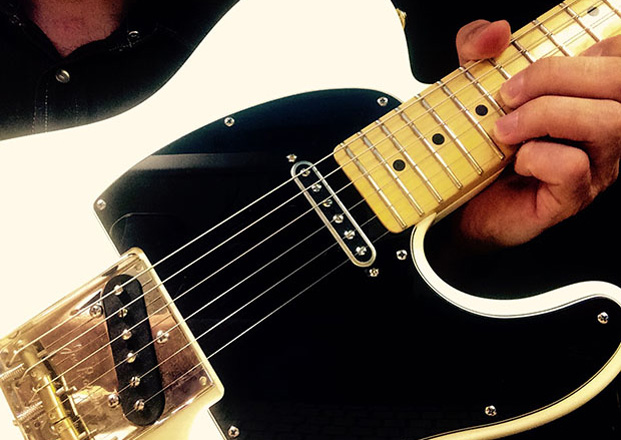How to Craft Heavy, Harmonically Challenging, Single-Note Riffs

One of the most important aspects of becoming a good metal guitarist is developing the ability to play long single-note lines with absolute precision, in regard to both picking articulation and locking into the beat.
Every great metal guitarist I know of—including James Hetfield, Kirk Hammett, Dave Mustaine and Dimebag Darrell—have always displayed the power and precision essential to great metal guitar playing.
For this month’s column, I’ve composed a fairly long, rhythmically and harmonically challenging metal-style riff that is intended to help you to sharpen your single-note chops.
FIGURE 1 is an original 17-bar riff that is based primarily in the key of E minor but is harmonically ambiguous here and there as well as rhythmically deceptive. For me, some of the best metal songs, like many of the classic tracks on Metallica’s Master of Puppets or Megadeth’s Rust in Peace, have these qualities.
The majority of the riff is played in even eighth notes, and I stick with alternate (down-up) picking throughout. In many of the bars, I shift back and forth between a picked note and a pair of notes sounded on the next higher string with a single pick stroke followed by a descending or ascending legato finger slide. In these instances, I still stick with the alternate-picking approach in order to maintain consistency in my attack with the pick hand. Bars 1–9 feature notes played on the bottom two strings only, with palm muting (P.M.) used on the sixth string throughout.
Palm muting involves laying the edge of your pick hand across the strings by the bridge saddles. It produces a darker, more percussive and heavier sound. In bars 1–3, all of the notes are derived from the E Aeolian mode (E F# G A B C D), also known as the E natural minor scale. Notice the repeated use of descending index-finger slides on the A string, which serve to set up position shifts. In bar 4, I introduce a line that repeatedly ascends chromatically on the low E string, followed by either a B or C note on the A string.
This sets up the switch back to the riff played in bar 3, followed by an inverted version of the riff from bar 2. To accommodate the odd phrasing of the line, the meter changes here from 4/4 to 5/4 and back. In bars 8 and 9, I introduce a diminished-based sequence that moves across the bottom three strings.
On each string, a series of three notes is sounded, with each pair of fretted notes being a minor third apart. To provide yet another twist, bars 10–15 shift alternately between 4/4 and 3/4 meters. Using the open A string as a pedal tone, I slide between different positions of E natural minor, working my way up the fretboard.
I then wrap things up in the last two bars with a phrase based on the E Phrygian mode (E F G A B C D), applying a pinch harmonic (P.H.) and some hearty finger vibrato to the final E note. As usual, begin practicing this figure at a slow to moderate metronome setting, ramping up the tempo as the notes become more comfortable to play. This exercise riff will help you build solid, dependable single-note metal rhythm chops.

Get The Pick Newsletter
All the latest guitar news, interviews, lessons, reviews, deals and more, direct to your inbox!








![Joe Bonamassa [left] wears a deep blue suit and polka-dotted shirt and plays his green refin Strat; the late Irish blues legend Rory Gallagher [right] screams and inflicts some punishment on his heavily worn number one Stratocaster.](https://cdn.mos.cms.futurecdn.net/cw28h7UBcTVfTLs7p7eiLe.jpg)

